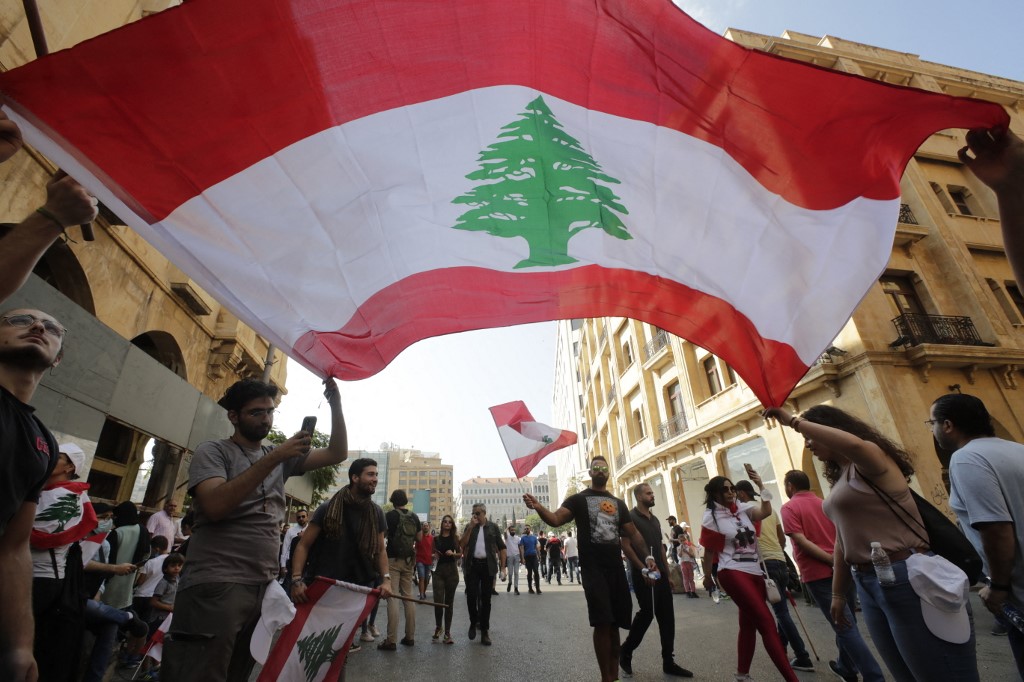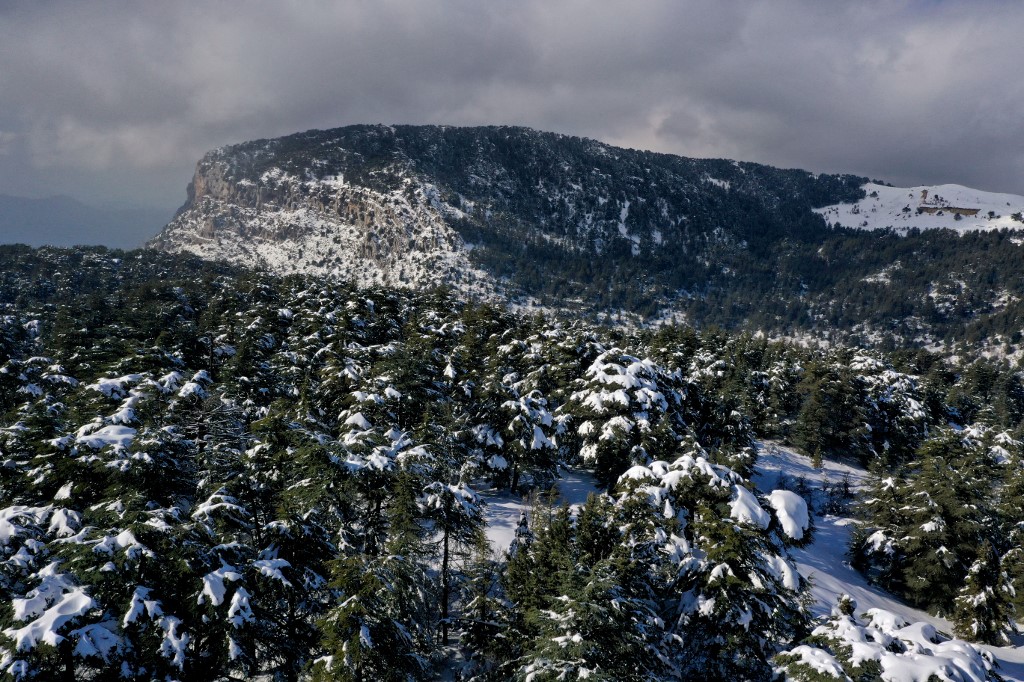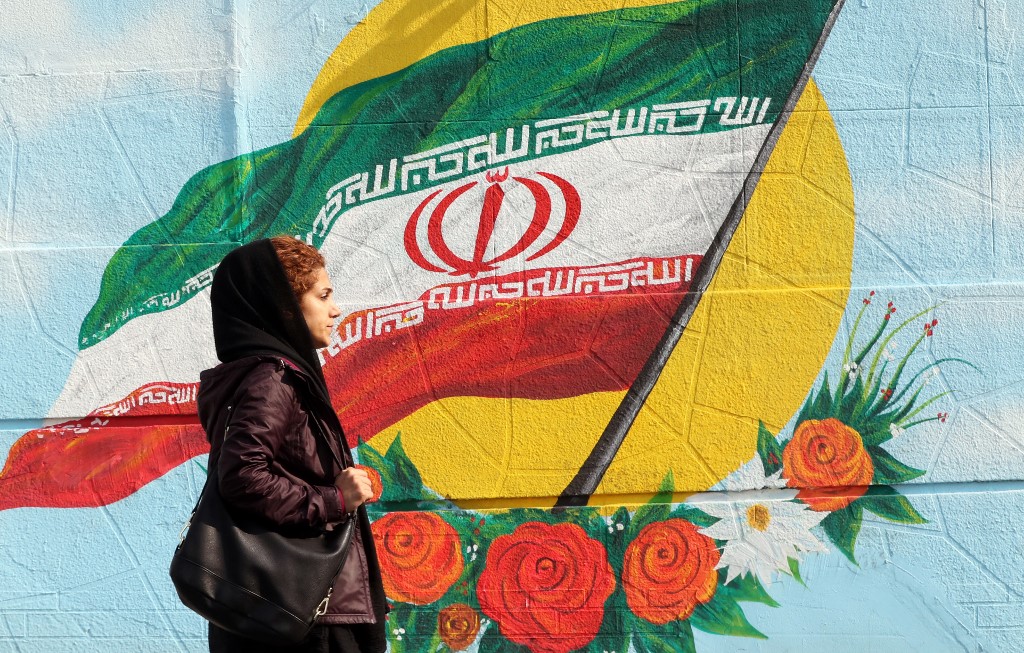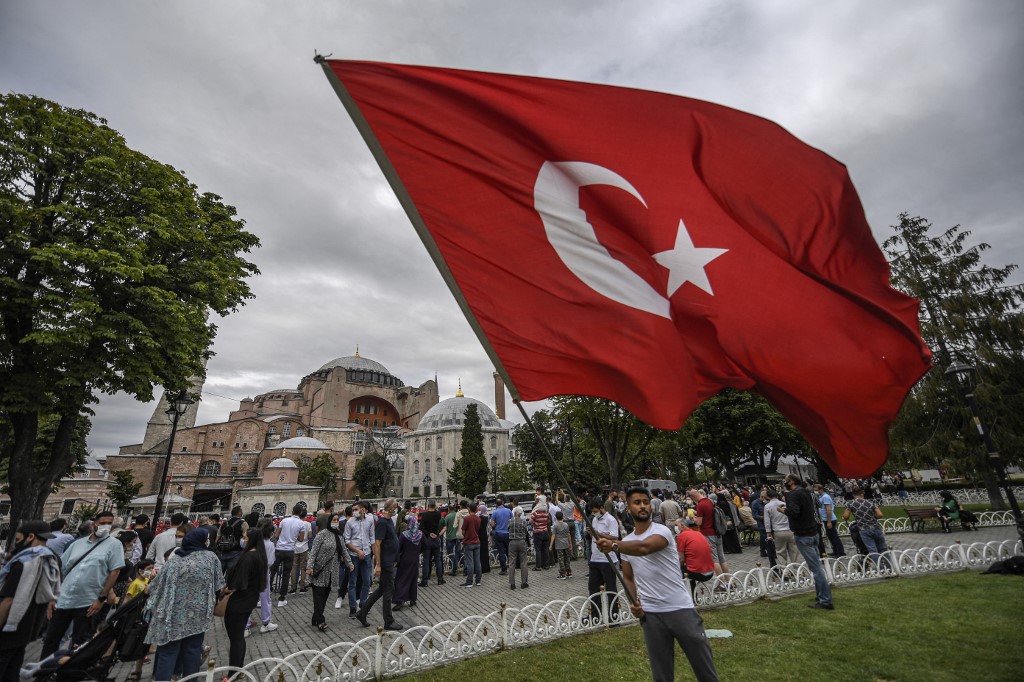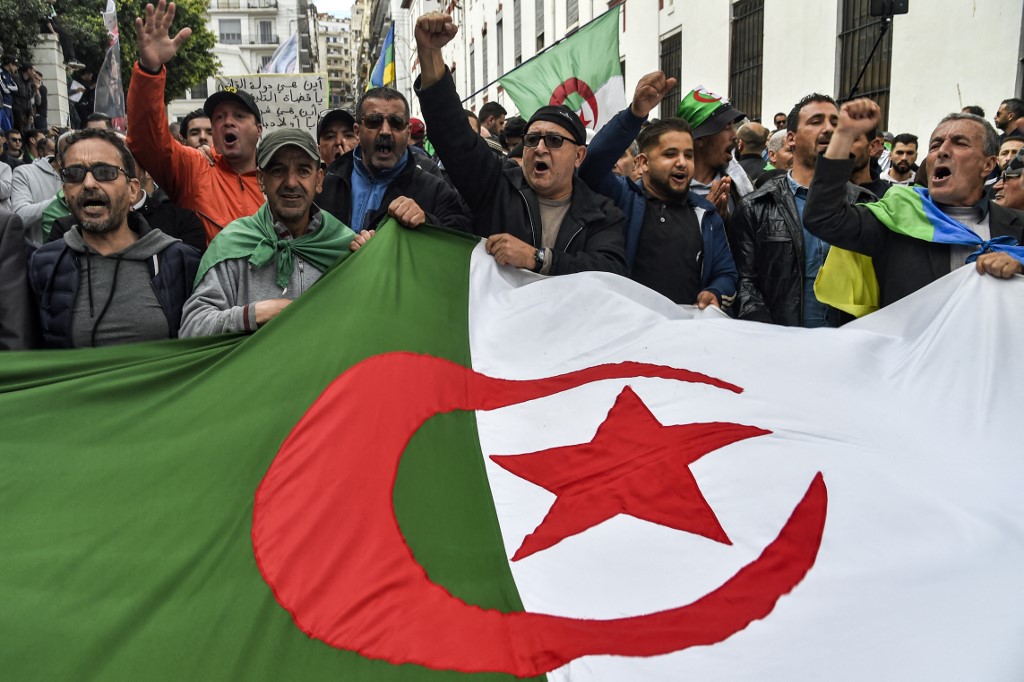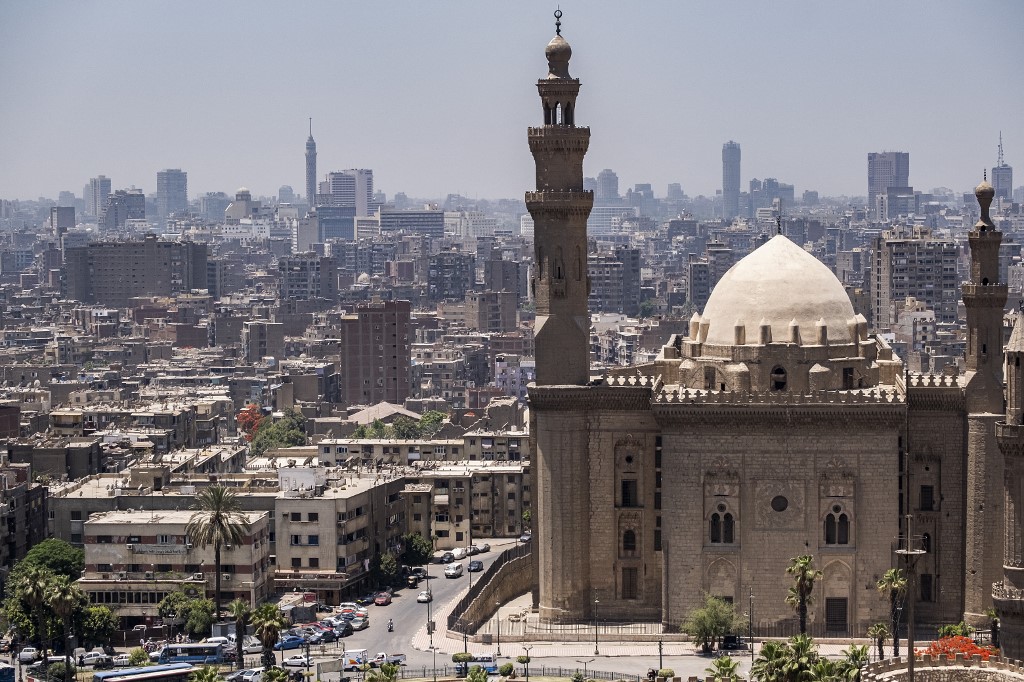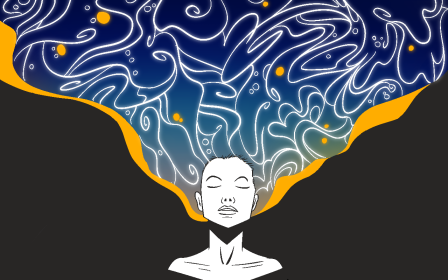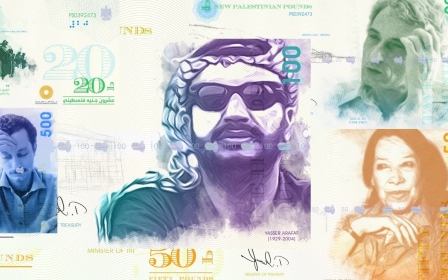Seven Middle Eastern flags and the symbolism they carry

Flags have the dual qualities of being both inconspicuous and emotionally rousing depending on the context.
For fans at a football match, waving a national flag can bring about the same emotions as a battle standard, while the same image behind a government official delivering an address may seem routine and sober.
The use of flags is now universal but it is with the rise of nationalism in the past two centuries that they have taken on an almost sacred symbolism for the people they represent.
That's because of the stories they represent, commonly rooted in the imagined or real origins of a country or group of people. These narratives often have a religious undertone, increasing the sense of importance people attach to their flag.
In some cases, such as that of Algeria, there is also the flag's association with a struggle that involved huge sacrifice.
New MEE newsletter: Jerusalem Dispatch
Sign up to get the latest insights and analysis on Israel-Palestine, alongside Turkey Unpacked and other MEE newsletters
Although there are some recurring themes and colours among the flags of the region, even subtle differences are enough to mark out one national story from the others.
Middle East Eye takes a look at the flags of seven Middle Eastern and North African countries and the stories associated with them.
Lebanon
The Lebanese flag features a prominent green cedar tree in the middle of a white band that separates two bands of red.
Famous for its cedar trees since ancient times, the emblem has become a symbol of the country, also featuring on its banknotes and mentioned in its national anthem.
Lebanon was once covered in large swathes of cedar, but historic exploitation of the trees means only a fraction remain.
The Phoenicians used cedar wood for boats, which they used to reach their colonies across the Mediterranean, while Solomon's Temple is believed to have been constructed using wood from further north in what is now Lebanon.
There is also a religious significance for Lebanon Christians due to references to the cedar in the Old Testament.
The Cedars of God, a forest network, is protected by Unesco, and also holds spiritual significance as a place of meditation and refuge. The area is also home to natural caves and monasteries.
Lebanon's current flag was adopted in December 1943, when Lebanon gained independence from France.
The country was heavily influenced by Francophone culture during the French protectorate and for a short while during French rule, the blue-white-red French tricolour was used as the official flag of Lebanon, later amended to include a cedar symbol.
In the modern flag, the white background was chosen to represent purity, as well as the snow-capped mountains in the country. The two red stripes on the flag are a reminder of the Lebanese people’s resilience and the blood spilled to protect their country from foreign powers.
Iran
Iran’s current flag was adopted in July 1980 after the revolution of 1979, but variants of the green-white-red tricolour have been in use since the 18th century.
The most notable inclusions in the revolutionary flag were 22 kufic-script repetitions of the Arabic phrase Allah Akbar (God is Great) and the word Allah in red in the centre.
These were a conscious attempt to reflect revolutionary Iran's Islamic character and replaced the Shah-era flag, which featured a lion and sun in the middle.
The new flag was designed by an architect named Hamid Nadimi and approved by Ayatollah Khomeini, Iran's supreme leader after the revolution.
The typography of the "Allah" emblem is designed to look like a sword, which represents strength and patriotism. Some also believe the five parts of the emblem symbolise the five pillars of Islam, as well as a tulip, which is a symbol commonly used to remember those who died for Iran.
The flag also features a green horizontal strip, which features on many flags of the Middle East and is associated with Islam.
The colour is believed to be the Prophet Muhammad’s favourite colour and is also mentioned in the Quran. On the Iranian flag, the colour also represents nature and vitality.
The white horizontal strip in the centre is believed to symbolise peace and freedom, whereas the red represents martyrdom and courage.
Turkey
The star and crescent on the Turkish flag are symbols of the Ottoman empire and have their origins in ancient Turkic culture.
When the nomadic Turkic tribes of Central Asia adopted Islam in the medieval era, the crescent moon symbol became widely used as a symbol for the religion generally, especially after the rise of the Ottomans and their adoption of the caliphate.
The original Ottoman flag featured a red background and a white crescent and star, which had eight points, each representing the different states of the empire.
Modern Turkey's flag was adopted in 1936 and is a slightly modified version of the Ottoman original.
There are a number of legends explaining the flag's origin, including one in which the founder of the Ottoman Empire, Sultan Osman I, had a dream where he saw a crescent and star rise from the chest of a judge whose daughter he wanted to marry.
Others believe say that during the 1448 Battle of Kosovo between the Ottoman Empire and a Christian coalition, a reflection of a star and moon was seen in a pool of blood.
In modern interpretations, the red colour used on the flag represents the blood of soldiers who fought for Turkey’s independence after the First World War.
Algeria
While Algeria’s flag follows a similar green-white-red colour scheme as the flags of other Muslim states, it has a specific historical connotation.
Like other flags from the region, the green is a representation of Islam and the white a symbol of peace, but the red crescent and star represent those who shed blood trying to free the country from French occupation.
France invaded Algeria in 1830 and later incorporated the North African territory into France proper, while withholding rights from the country's majority Muslim population.
Throughout colonial rule, native Algerians were involved in resistance, both violent and non-violent, against the French, and adopted flags as symbols of defiance against the occupiers.
One possible inspiration for the current Algerian flag is the one used by Emir Abdul-Qadir al-Jazairi, who led the struggle against French colonialism in the mid-19th century, which featured green-white-green bands with an emblem of a hand in the middle, surrounded by the emir's signature and the Arabic phrase: "Victory is from God and the conquest (in this context: defeat of the French) in coming."
Egypt
Egypt’s flag was adopted in October 1984 and has a golden eagle in the centre on a white strip, as well as red and black horizontal bands.
The country's flag has changed a number of times under different rulers. Under King Farouk (1936-52), the Kingdom of Egypt’s flag was green, with a white crescent moon and three stars. The green colour paid homage to Egypt’s rich agricultural lands, whereas the stars represented Egypt, Nubia and Sudan.
The design of Egypt’s flag today was based on the one adopted by former President Gamal Abdel Nasser, who overthrew King Farouk in a military coup in 1952, establishing a republic.
The eagle is a representation of the "Eagle of Saladin", after the Muslim warrior who defeated the Crusaders and ruled an empire centred in Egypt.
In its modern usage, the emblem is a symbol of Arab nationalism and depicts the strength and determination of the Egyptian people.
The eagle symbol also has significance in Ancient Egyptian culture and it is possible that pharaonic symbols may have influenced later Muslim rulers.
The colour red symbolises strength, as well as those who lost their lives protecting the country. White represents peace and black, the oppression and dark periods of the country’s history.
Oman
Oman’s flag was officially adopted in April 1995, and represents the sultanate’s royal family and the country’s rich historical past.
The flag, which is a horizontal tricolour flag of white, red and green, was adopted by the late Sultan Qaboos bin Said, who died in 2020.
During his 50-year-long reign, Qabus embarked on a modernisation programme that saw Oman use its oil wealth to transform from one of the poorest countries in the world into a modernised state.
The white band in the flag represents peace and prosperity, the red symbolises the battle for Oman’s independence, and green pays homage to the fertility of the land.
The emblem on the flag is the national coat of arms, which consists of two crossed daggers and a belt, and dates back to the mid-18th century, when it was adopted as a royal crest by the Said dynasty.
The curved daggers, known as a khanjar, are a nod to an Omani tradition in which adult men carried the weapons on their waists.
Today, the daggers are still worn by men on formal occasions, a tradition shared by neighbouring Yemen.
The emblem also features on official documents and banknotes and is a significant part of Omani culture and heritage.
Morocco
Morocco’s flag is a hollow green five-point star against a red background and was adopted in 1915 during the rule of Moulay Youssef Alaoui.
The country's ruling Alaouite dynasty had previously used a plain red flag and the addition of the star helped distinguish the Moroccan flag from other similar ones.
French and Spanish colonialists did not allow the flag to be flown anywhere outside the country and it only became Morocco's official diplomatic flag on independence in 1956.
The red symbolises the strength of the Moroccan people, while the five-pointed green star represents Islam and its five pillars of faith.
This article is available in french on Middle East Eye French edition.
Middle East Eye delivers independent and unrivalled coverage and analysis of the Middle East, North Africa and beyond. To learn more about republishing this content and the associated fees, please fill out this form. More about MEE can be found here.


